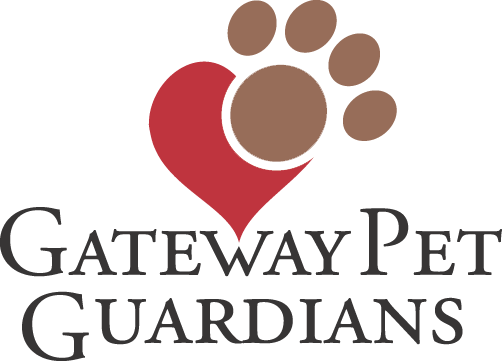 By Ashley Riley, GPG Vice President
By Ashley Riley, GPG Vice President
I was recently approached by a former coworker who’d had a bad experience with a botched adoption attempt from her local rescue. She felt a bit scarred by the incident and wanted to wait a while before she and her husband tried again, but this time she wanted to be prepared. Here’s some helpful hints for first-time adopters based on what I told her:
1. Adopt a pet that’s been in a foster home.
This a very good idea for first-time pet adopters and those who need to have a dog with a very specific personality. I’d suggest looking for one who has been in that home for at least a month if not longer, so the foster has a really good idea about the dog and its behavior and what kind of environment it is going to require (and whether or not your home environment will be well-suited for the dog).
2. Know the type of pet that’s best for you and your household.
Younger puppies are cute and cuddly but they’re going to be super active for at least a year, if not two depending on the breed. Do you have time to walk them? Is there a dog park  nearby? Do they have room to move around in your house? And if you have small children, how will the two interact? Smaller dogs are generally able to get enough exercise in an apartment or small house and wouldn’t require going outside often. Also, large dogs have a tendency NOT to be very active – they just lay around a lot. It sounds counterintuitive, but really big dogs like Great Danes make good apartment dogs because their activity level is so low.
nearby? Do they have room to move around in your house? And if you have small children, how will the two interact? Smaller dogs are generally able to get enough exercise in an apartment or small house and wouldn’t require going outside often. Also, large dogs have a tendency NOT to be very active – they just lay around a lot. It sounds counterintuitive, but really big dogs like Great Danes make good apartment dogs because their activity level is so low.
It’s the medium-sized dogs that tend to be a little more work, depending on temperament. They tend to be more active but are just a tad too big to really wear that energy down in a small space. Most dogs tend to be relatively calm after they’ve reached 2 years of age.
4. Consider the source.
Any foster you talk to should be very inquisitive about you, your family, your living situation, life style and the traffic level of your house – who is coming and going, etc. If they’re not asking those questions, they’re not doing their job. Be cognizant that BECAUSE you don’t have any other pets, some people may tend to see you as “ideal” to take dogs that do have aggression problems or other behavioral/socialization issues and can’t be with other dogs, simply because the shelter or rescue is trying to unload the “problem child.” I don’t mean to paint such a negative picture, because with the right training and follow up, even most “dog aggressive” dogs can be rehabilitated and most experienced foster families know exactly what to do. It’s just something to be aware of – if you get a weird sense that this person is really trying to sell you this dog, rather than the other way around, it could be a red flag.
3. Ask about the adoption follow-up process. What happens if there are issues?
We all want to think that we’re going to take our little love nugget home and live happily ever after, but occasionally that’s just not the case. Make sure you get the skinny on what happens if thigns don’t work out with your new furry friend. What happens if the animal needs training? Was it already in training? Gateway Pet Guardians has a program in place for our animals and if they do have behavioral problems, they go through intensive training while they’re still in the shelter or foster care, and we can sometimes negotiate discounted training for their adoptive families if they still need it. We also don’t keep dogs in our shelter for more than 2 weeks if we can help it – because the foster home experience is so important.
I’d suggest looking at dogs that are already in multi-person, multi-dog home environments – you can ask those kinds of questions when talking to the foster family. Look at a dog’s petfinder profile before going to visit it and see what is written there. Be up front with the foster family about you situation – will the dog be home alone? Talk about it to make sure that it’s okay being by itself (a dog that suffers from separation anxiety can be very destructive and may not be the best choice for you).
What happens if things just don’t work out and you have to return the animal? How will the foster parent handle that situation? These are all important things to keep in mind.
4. Take a test drive.
A lot of foster programs and even shelters will let you take a dog for a sleepover or a weekend to just try things out – no commitment necessary. It’s not a bad idea to ask about that. Especially with shelter dogs, we like to get them as much socialization as possible. We let some people volunteer to take ours for a weekend just to get them out and around people for a bit, plus they can report back to us about any behavioral issues and we can work on training right away.
Questions you should ask:
- What is this animal’s current home environment like? Is it similar to yours?
- How does this animal behave around other people and animals that are similar to who will be in my own house?
- Does this pet have any behavioral issues? Has it been through any kind of training? Will it require training in the future?
- What happens if it doesn’t work out?
Take a look at our list of other things to consider before adopting a pet.
[spacer height=”15px”][divider][spacer height=”15px”]
[alert type=”warning” color=”#888″ show_close=”true”]Back to Gateway Pet Gazette Front Page. Click here for more stories.[/alert]
[divider]

